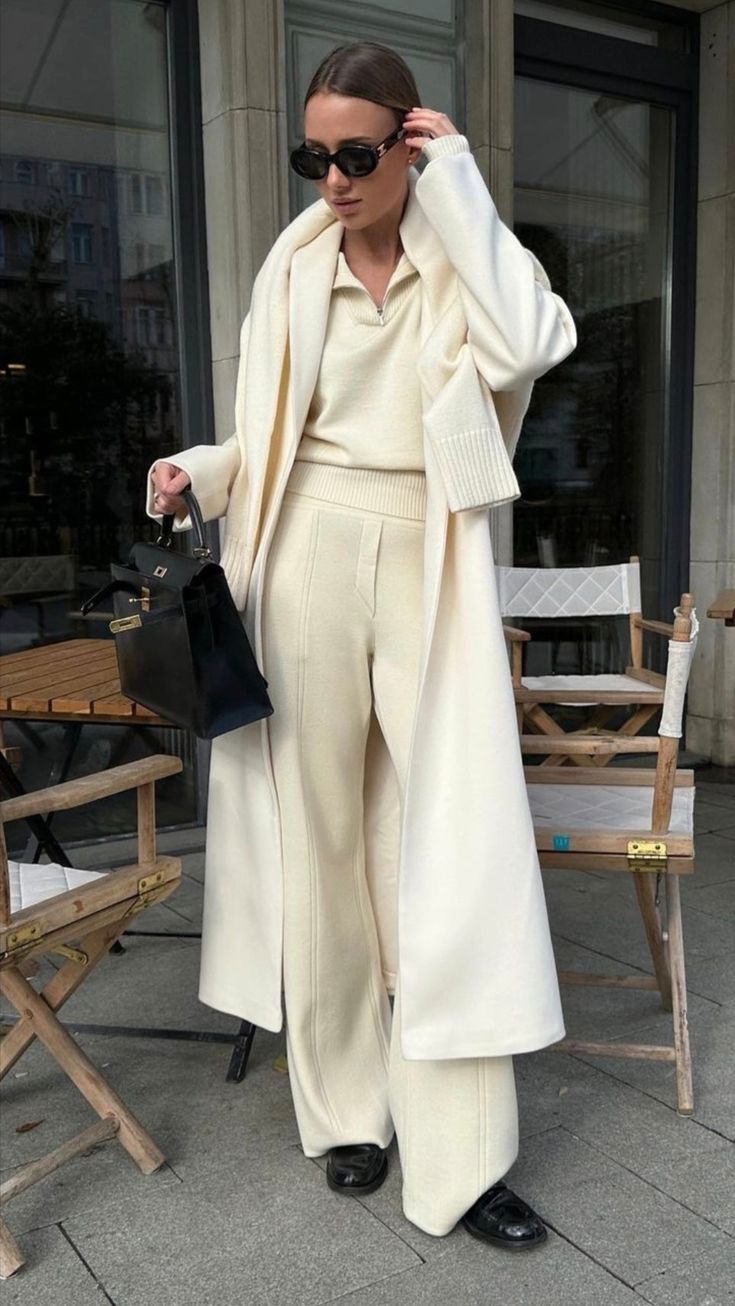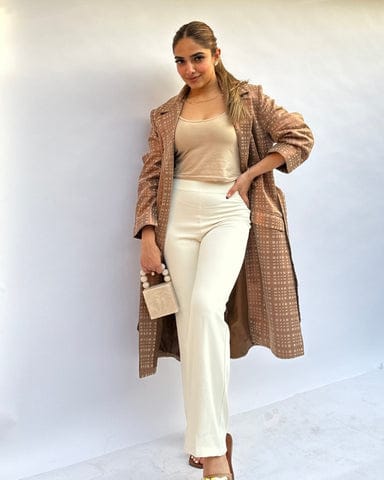

Table of Contents
INTRODUCTION
Tomorrow’s Style Fashion is more than just clothing; it is a reflection of culture, society, and the times we live in. As we stand on the threshold of a new era, the future of women’s fashion promises to be a fascinating blend of sustainability, technological innovation, inclusivity, and cultural diversity. The phrase “Embrace the Future of Women’s Fashion” invites us to explore how these elements are transforming the industry and what they mean for the modern woman.(Tomorrow’s Style)
The Evolution of Women’s Fashion
Women’s fashion has always evolved in response to the world around it. From the restrictive corsets of the Victorian era to the liberating flapper dresses of the 1920s, fashion has reflected the changing roles and aspirations of women. In the past century alone, we’ve seen fashion shift from the structured elegance of the 1950s to the rebellious styles of the 1970s, the power dressing of the 1980s, and the minimalist trends of the 1990s.(Tomorrow’s Style)
Today, as we look towards the future, fashion is no longer just about style. It has become a powerful tool for self-expression, social change, and sustainability. The future of women’s fashion is about more than just what we wear—it’s about how we live, what we believe in, and how we want to shape the world.
- Sustainability: A Core Value of Future Fashion
In recent years, sustainability has become a central theme in the fashion industry. As the environmental impact of fast fashion becomes increasingly apparent, consumers are demanding more ethical and eco-friendly options. The future of women’s fashion is rooted in this shift towards sustainability, with brands embracing practices that reduce waste, conserve resources, and promote ethical labor standards.(Tomorrow’s Style)
Sustainable fashion begins with the materials used. Organic cotton, recycled polyester, and innovative fabrics like mushroom leather and recycled ocean plastics are gaining popularity. These materials not only reduce the environmental footprint of clothing but also challenge the industry to innovate and find new solutions.
Production processes are also changing. Many brands are adopting zero-waste pattern making, where every piece of fabric is used, leaving no scraps behind. Others are embracing slow fashion, focusing on quality over quantity, and encouraging consumers to invest in timeless pieces that can be worn for years.(Tomorrow’s Style)
Circular fashion is another key trend, where garments are designed with their entire lifecycle in mind. Brands are creating clothes Tomorrow’s Style that can be easily recycled or repurposed, reducing the amount of clothing that ends up in landfills. Take-back programs, where consumers can return old garments to be recycled into new ones, are becoming more common, reflecting a growing commitment to sustainability.(Tomorrow’s Style)
. Technological Innovation: The Next Frontier
The integration of technology into fashion is one of the most exciting developments on the horizon. Technology is not only changing how clothes are designed and manufactured but also how they are worn and experienced.
3D printing is revolutionizing fashion design, allowing for the creation of intricate patterns and structures that were previously impossible. This technology offers limitless possibilities for customization, enabling consumers to have garments tailored to their exact measurements and preferences.(Tomorrow’s Style)
Smart textiles represent another groundbreaking advancement. These fabrics can respond to environmental changes, such as temperature or light, and can even monitor the wearer’s health. Imagine a dress that changes color based on the weather or a jacket that charges your phone while you wear it. These innovations are no longer just futuristic concepts—they are becoming a reality.
The digital revolution is also transforming the shopping experience. Virtual fitting rooms, augmented reality (AR), and AI-powered personal shoppers are making it easier for consumers to find clothes that fit their style and body type. This technology not only enhances the shopping experience but also reduces returns, contributing to more sustainable consumption.
Inclusivity and Diversity: Fashion for All
Inclusivity and diversity are at the forefront of the future of women’s fashion. The industry is moving away from the narrow beauty standards that have dominated for so long and embracing a broader, more inclusive vision of beauty.
Size inclusivity is a significant part of this shift. More brands are offering a wider range of sizes, ensuring that women of all shapes and sizes can find clothes that fit them perfectly. This change is not just about expanding size ranges—it’s about rethinking how clothes are designed, with a focus on flattering all body types.(Tomorrow’s Style)
In addition to size inclusivity, fashion is becoming more inclusive in terms of age, ethnicity, and gender. Advertising campaigns are increasingly featuring models of different ages, races, and backgrounds, reflecting the diversity of the real world. This inclusivity extends to the runway, where more designers are showcasing collections that cater to a diverse audience.(Tomorrow’s Style)


Gender fluidity is another critical aspect of inclusivity in fashion. The lines between traditional men’s and women’s clothing are Tomorrow’s Style blurring, with more brands offering gender-neutral collections. This trend reflects a broader societal shift towards recognizing and respecting gender diversity and challenging traditional norms.
As we embrace the future of women’s fashion, we see a fascinating tension between minimalism and maximalism. On one side, minimalism continues to resonate with those who prefer clean lines, simple silhouettes, and neutral palettes. This style is about stripping away the unnecessary and focusing on the essentials, often emphasizing quality over quantity.(Tomorrow’s Style)
Minimalist fashion aligns closely with the broader movement towards sustainability. It encourages consumers to buy less but invest in higher-quality pieces that are designed to last. The minimalist trend is not just about aesthetics—it’s about a philosophy of living that values simplicity and mindfulness.(Tomorrow’s Style)
In contrast, maximalism is all about embracing excess. Vibrant colors, bold patterns, and elaborate designs characterize this trend. Tomorrow’s Style Maximalism celebrates individuality and self-expression, encouraging women to be bold and unapologetic in their fashion choices.
The coexistence of minimalism and maximalism reflects the diversity of women’s fashion today. It shows that there is no one way to dress and that fashion is ultimately about personal expression. Whether you prefer the simplicity of minimalism or the exuberance of maximalism, the future of fashion offers something for everyone.
- The Influence of Cultural Heritage
Another trend shaping the future of women’s fashion is the incorporation of cultural heritage. Designers are increasingly drawing inspiration from traditional garments and techniques, blending them with contemporary styles to create something new and meaningful.
This trend is about celebrating cultural diversity and preserving traditional craftsmanship in a modern context. For example, traditional textiles like African Ankara, Indian sarees, or Japanese kimonos are being reinterpreted in contemporary fashion. These designs honor cultural heritage while also challenging the dominance of Western fashion standards.(Tomorrow’s Style)
The incorporation of cultural heritage into fashion is also a response to globalization. In a world where cultures are increasingly interconnected, fashion is becoming a melting pot of influences. This trend reflects a globalized world where fashion is not just a reflection of one culture but a celebration of many.
- Empowerment through Fashion
Fashion has always been a powerful tool for self-expression, but in the future, it will also be increasingly seen as a means of empowerment. Women are using fashion to assert their identity, beliefs, and values. Whether it’s through wearing clothes that make a political statement, choosing brands that align with their ethical values, or simply dressing in a way that makes them feel confident, fashion is becoming a form of empowerment. Tomorrow’s Style
The rise of women-owned fashion brands and female designers is contributing to this sense of empowerment. These designers are creating clothes that reflect the realities of modern women’s lives—clothes that are not just stylish but also functional and comfortable. Empowerment in fashion is about creating a space where all women feel seen, valued, and celebrated.
- The Future Is Now
The future of women’s fashion is not something distant or abstract—it is happening right now. The trends shaping the industry today are laying the groundwork for a more sustainable, inclusive, and innovative future.
Embracing the future of women’s fashion means recognizing that the industry is at a crossroads. It’s a time of transformation, where traditional norms are being challenged, and new possibilities are emerging. The future of fashion is about more than just what we wear; it’s about how we live, what we value, and how we see ourselves in the world.(Tomorrow’s Style)
As we move forward, women’s fashion will continue to evolve, shaped by sustainability, technology, inclusivity, and cultural diversity. Whether you are a minimalist or a maximalist, whether you value tradition or innovation, there is a place for you in the future of fashion. So, embrace it, because the future of women’s fashion is about embracing who you are, where you come from, and where you’re going.(Tomorrow’s Style)
Conclusion
As we journey into the future of women’s fashion, it becomes clear that the industry is on the cusp of a revolution—one that is defined by sustainability, technological innovation, inclusivity, and a deep respect for cultural diversity. Fashion is no longer just about aesthetics; it’s a reflection of our values, our identity, and our aspirations for a better world.
The future of fashion invites us to be more mindful of the choices we make, encouraging us to support brands that prioritize ethical practices and sustainability. It challenges us to embrace new technologies that enhance our fashion experience while reducing our environmental footprint. Most importantly, it inspires us to celebrate our individuality and diversity, recognizing that fashion is a powerful tool for self-expression and empowerment.
As we stand at the crossroads of tradition and innovation, the future of women’s fashion offers limitless possibilities. By embracing this future, we are not just keeping up with trends—we are becoming active participants in shaping the fashion of tomorrow. So, step into this new era with confidence, knowing that the future of fashion is not just something 10.


In this ever-evolving landscape, there is no single path to follow. Whether you find yourself drawn to the simplicity of minimalism, the boldness of maximalism, or somewhere in between, the future of fashion is about finding what resonates with you. It’ s about embracing the changes that are reshaping the industry and making them a part of your personal style narrative.
